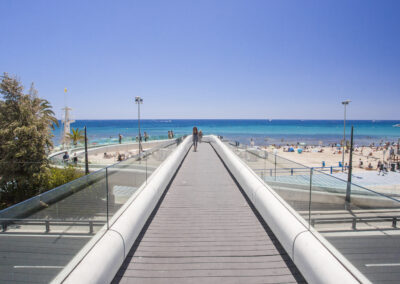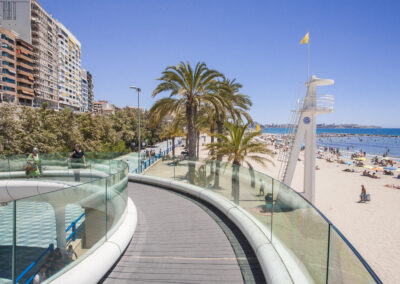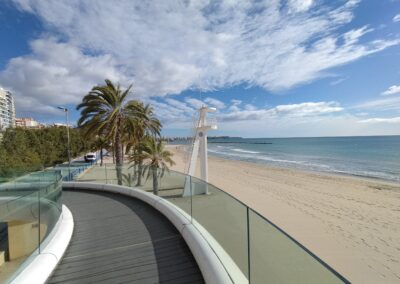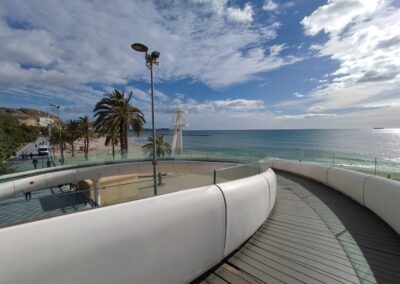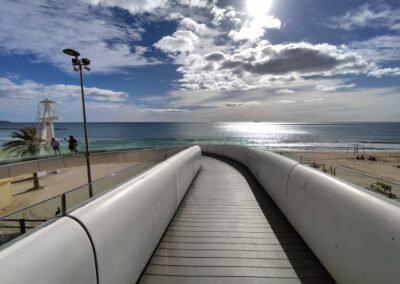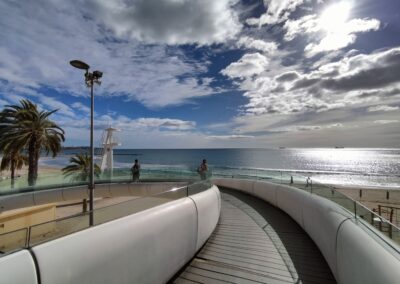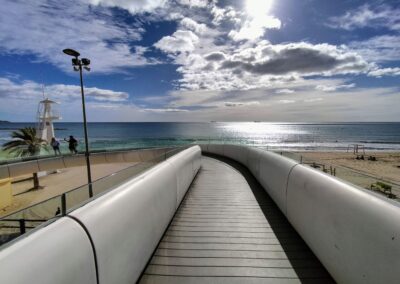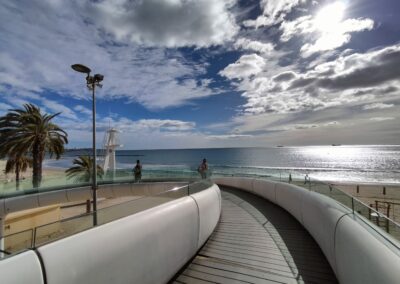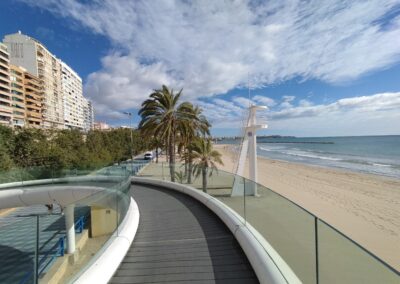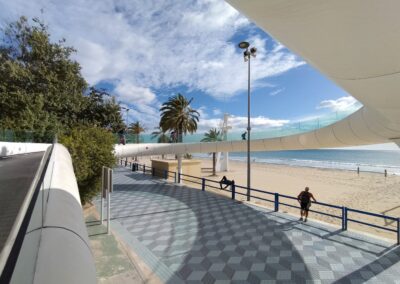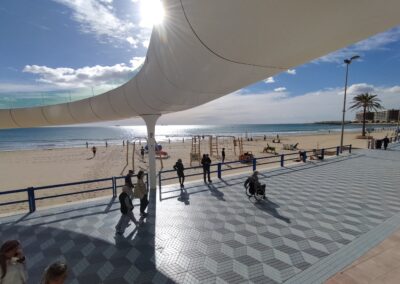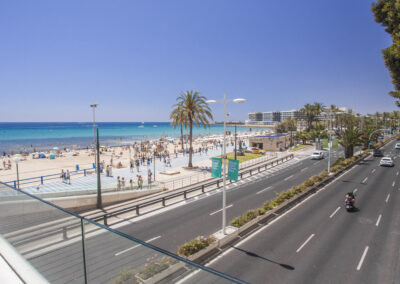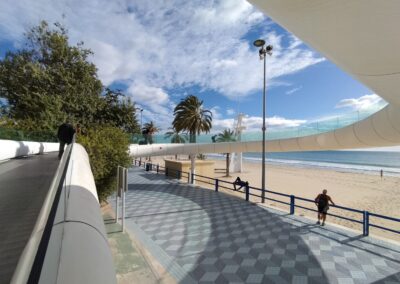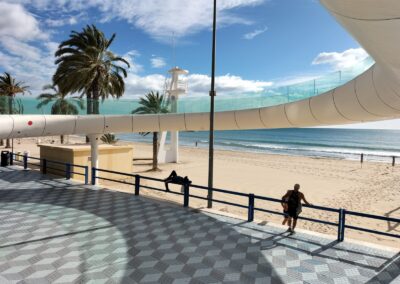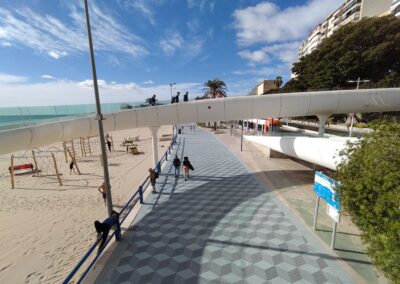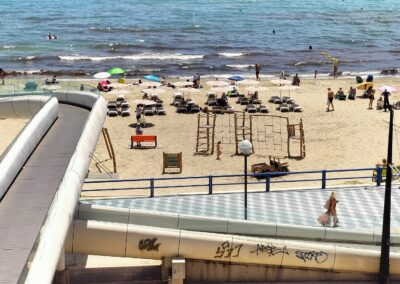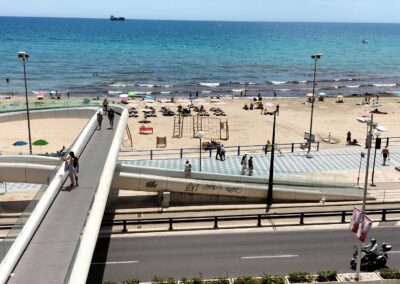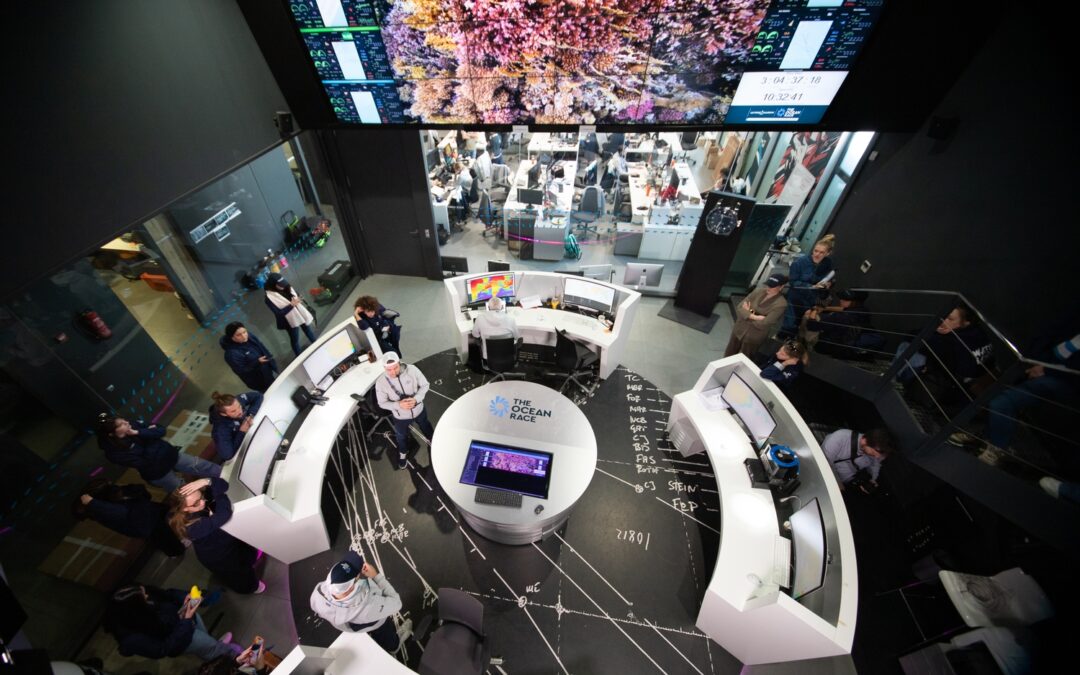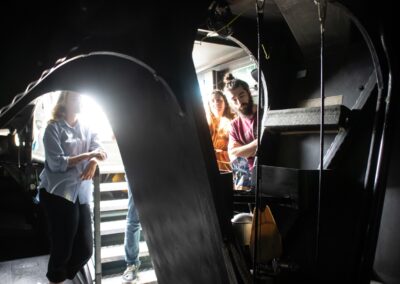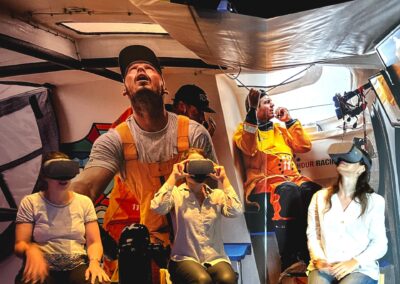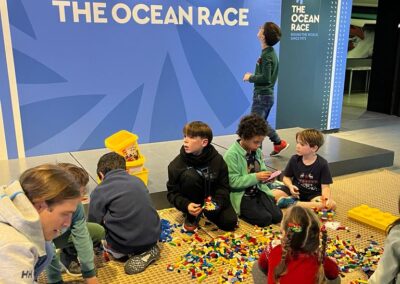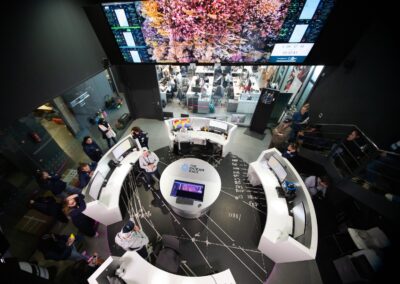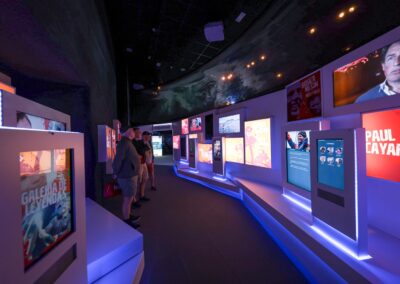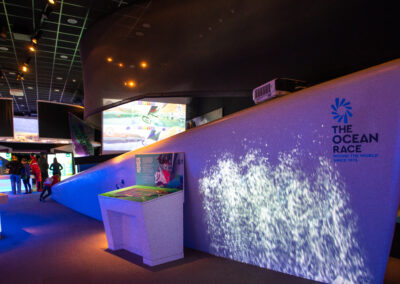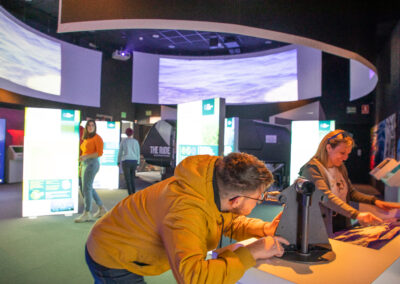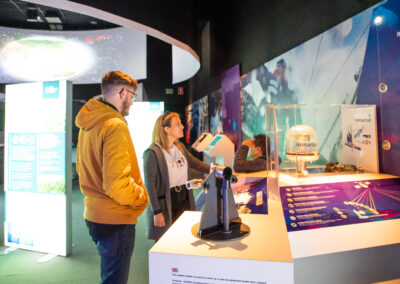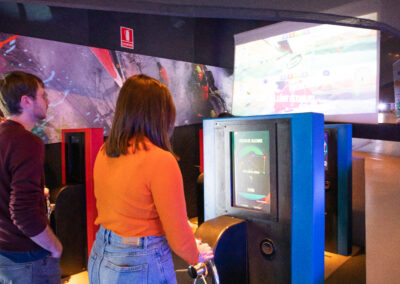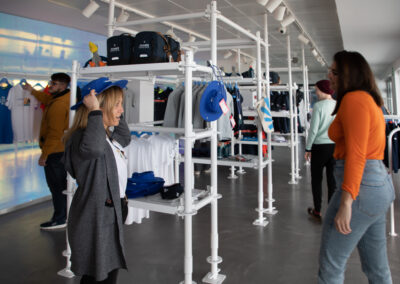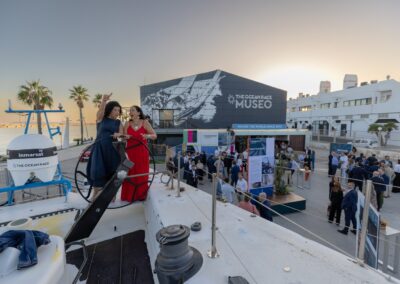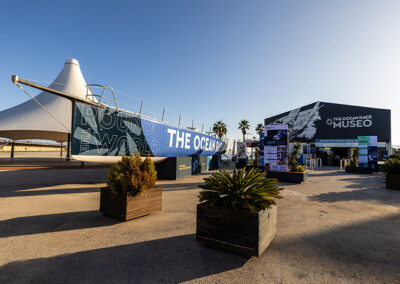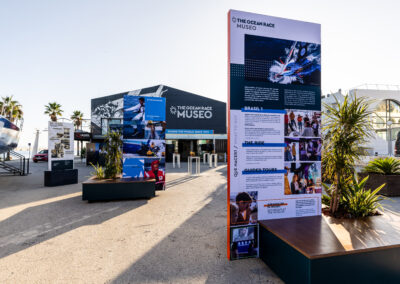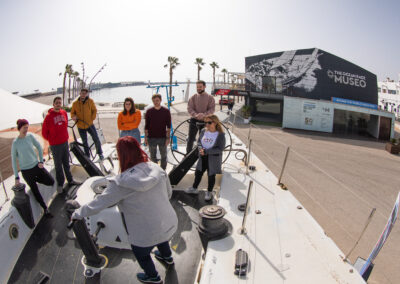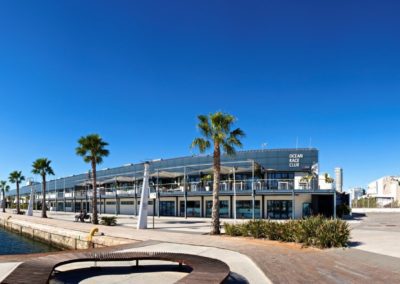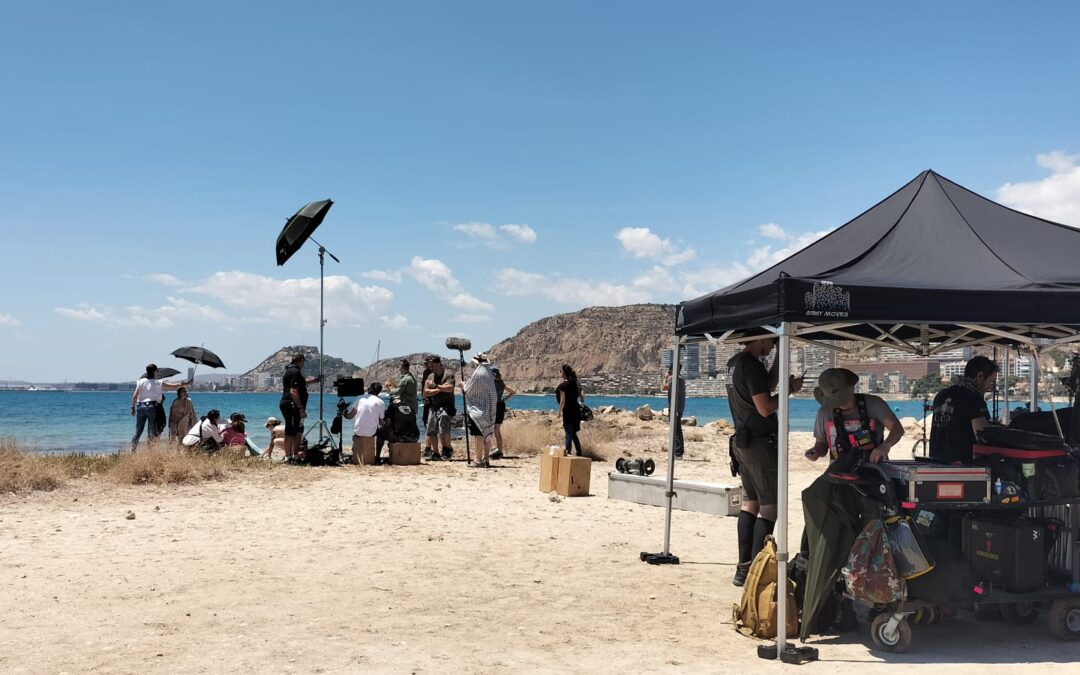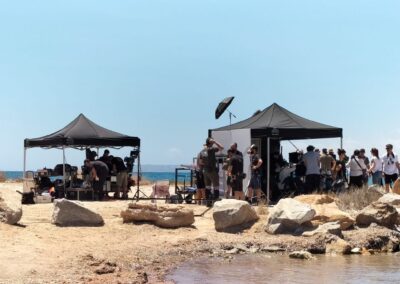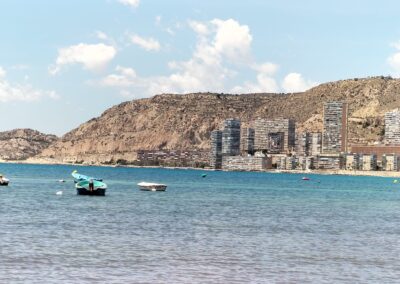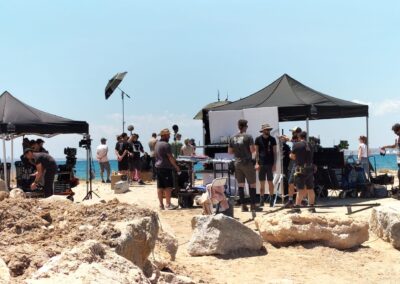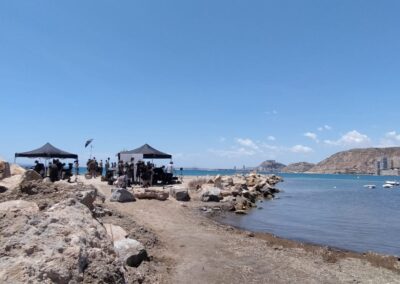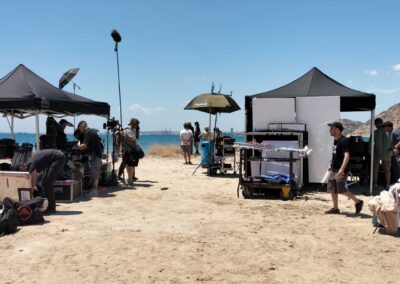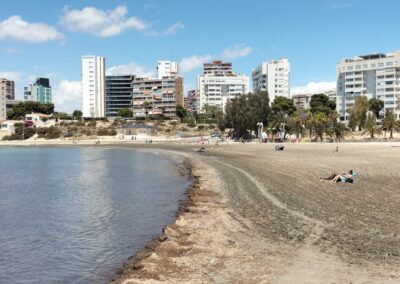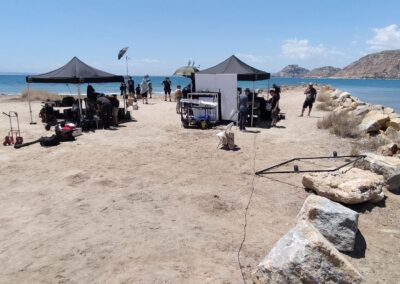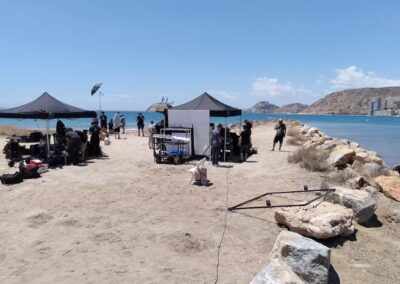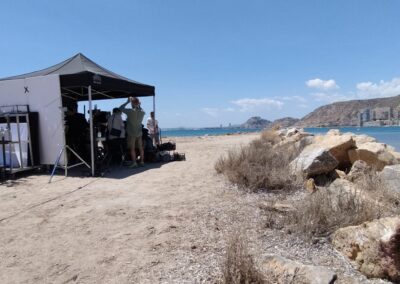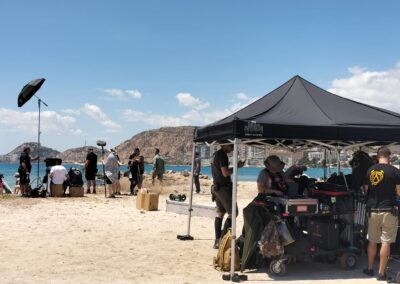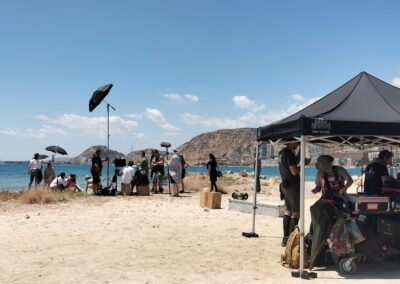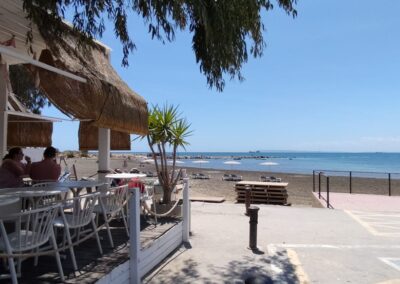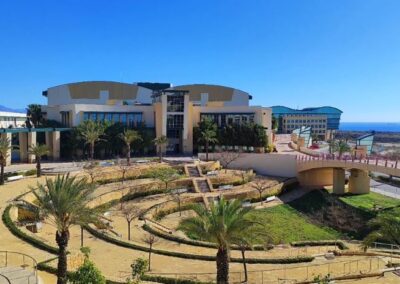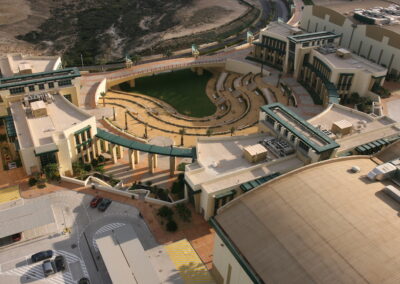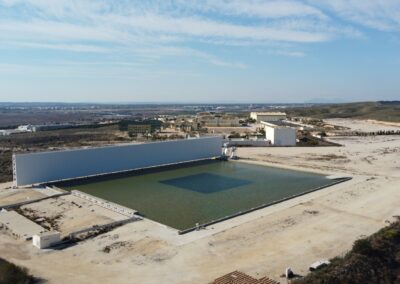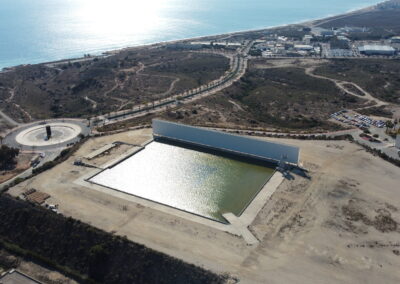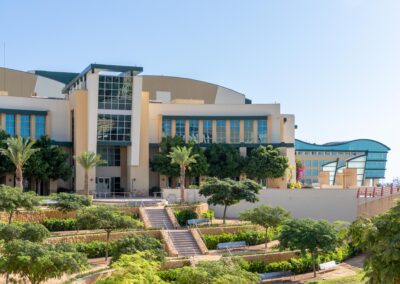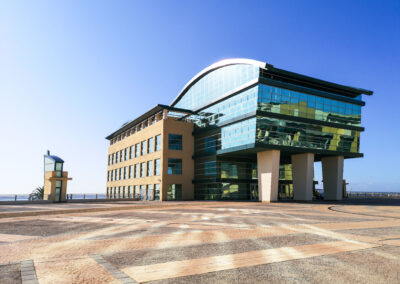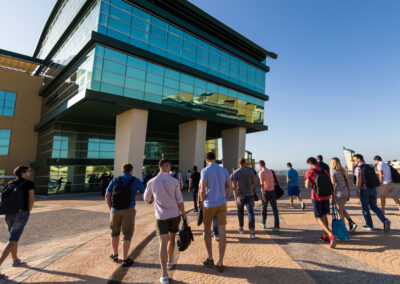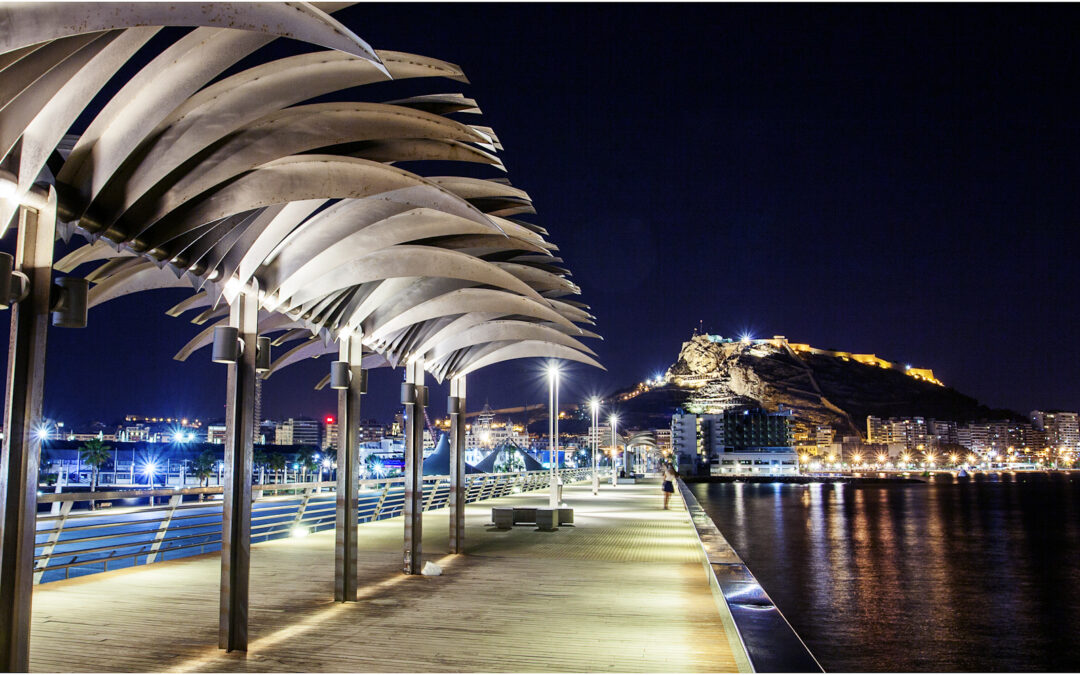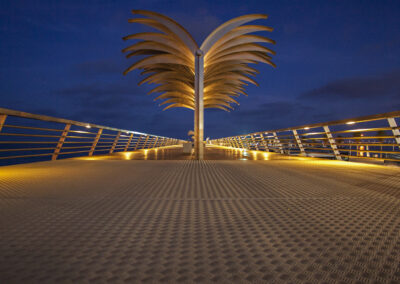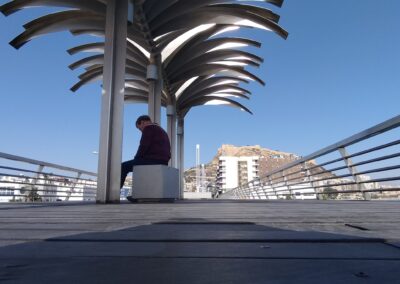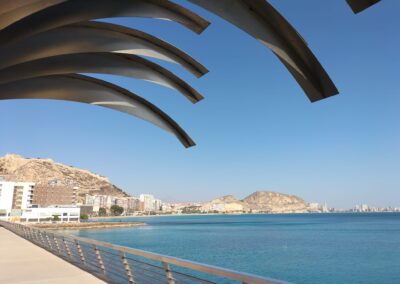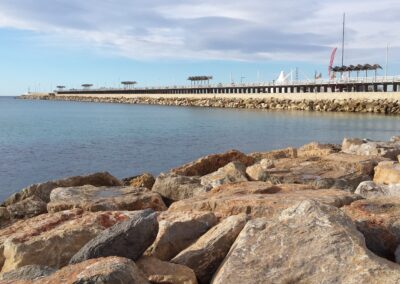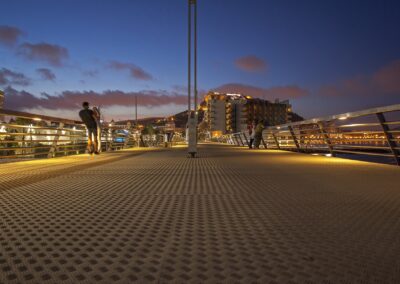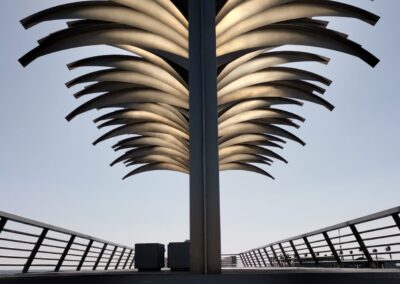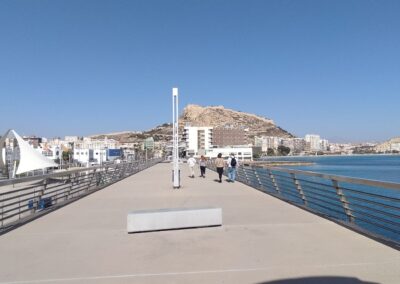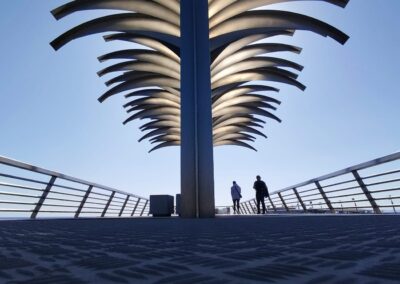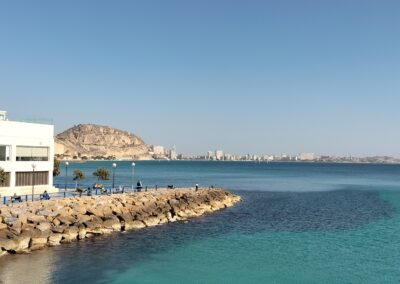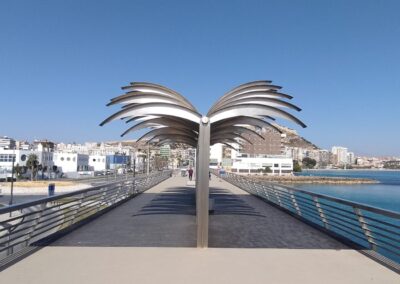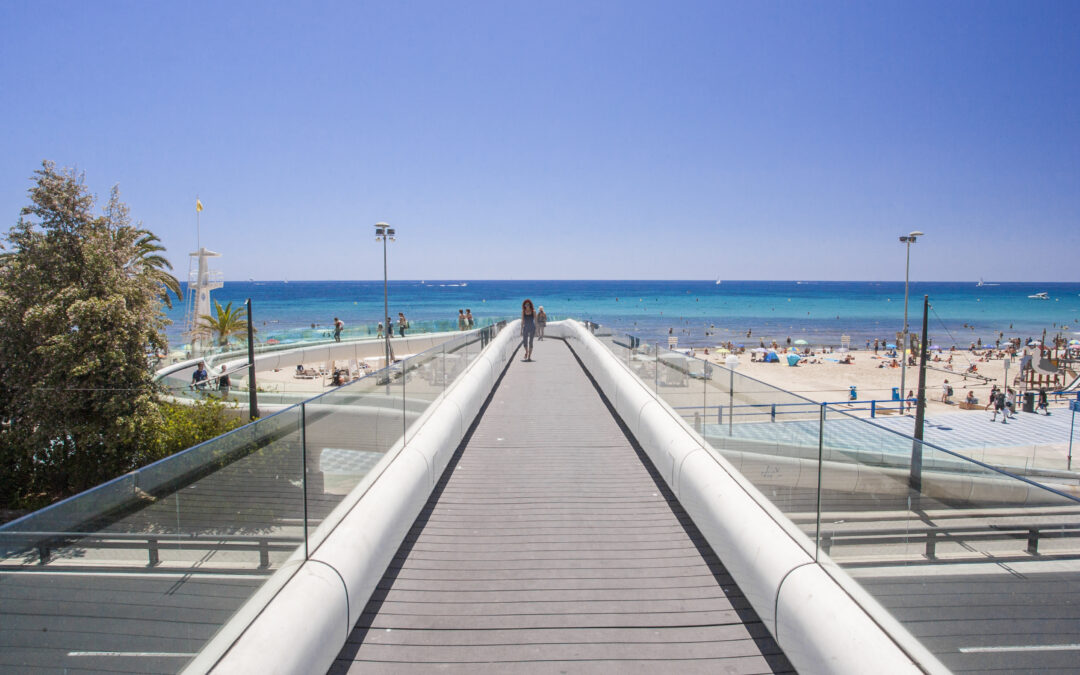
Postiguet beach footbridge
Practical information
The Postiguet beach Footbridge is part of Alicante’s public road network, offering both a Mediterranean and avant-garde aesthetic. It is a pedestrian bridge that crosses Avenida de Jovellanos and leads directly to Paseo de Gómiz, which runs parallel to Postiguet Beach in the heart of the city, making it easily accessible for film crews.
Filming availability
As it is a public space, filming permits must be processed in advance through the Alicante Film Office.
Best days for filming
Weekdays, particularly early in the morning, are ideal due to lower visitor numbers and favorable natural light for daytime shots.
It is best to avoid weekends, the months of July and August due to high visitor influx, and the period between June 20 and 24, when Alicante’s main festival, Las Hogueras de San Juan, takes place.
Spring and autumn offer optimal weather conditions and lower visitor density.>/p>
Features and Facilities
- Parking for filming equipment
- Public toilets
- Catering areas
- Public toilets
Filming requests
All filming requests must be processed through the Alicante Film Office:
Email: info@alicantefilmoffice.com
Phone: (+34) 965 148 113 / (+34) 965 177 052
View the FILMING PERMIT APPLICATION FORM
Documents and forms
A period of 30 days is necessary to process permits that require traffic interruptions and/or reservations of parking spaces for vehicles. This is because a report by Alicante’s City Council Department of Safety and Traffic is mandatory.
The forms to request permission for filming can be sent through this web page.

In accordance with Data Protection Legislation, Regulation (EU) 20161679 of 27 April 2016, we inform you that your personal data will be processed, under the responsibility of the Municipal Tourist Board, in order to implement or answer your request appropriately.
• The data will be processed exercising the powers attributed to the Municipal Tourist Board by Law 7/1985 of 2 April, Regulator of the Basis of the Local Regime, and by Law 39/2015 of 1 October, Common Administrative Procedure of Public Administrations, and will not be ceded to third parties, except in the case of legal obligation of assignment to other organisms.
• By means of a request addressed to the Municipal Tourist Board, you may exercise your rights of data access, rectification, deletion and portability as well as limitation or opposition to its processing.
• Additional information: You can consult additional and detailed information on Data Protection on our website:
https://www.alicantefilmoffice.com/en/privacy-policy/
Fees
Municipal fees for the use of public spaces for filming must be paid to the Alicante City Council through the Public Space Occupation Department. Regulations and rates vary depending on the type of production, filming locations, and duration at each site.
If you have any questions, feel free to contact us: info@alicantefilmoffice.com, Tel: (+34) 965 148 113.
View Public Space Occupation Fees

